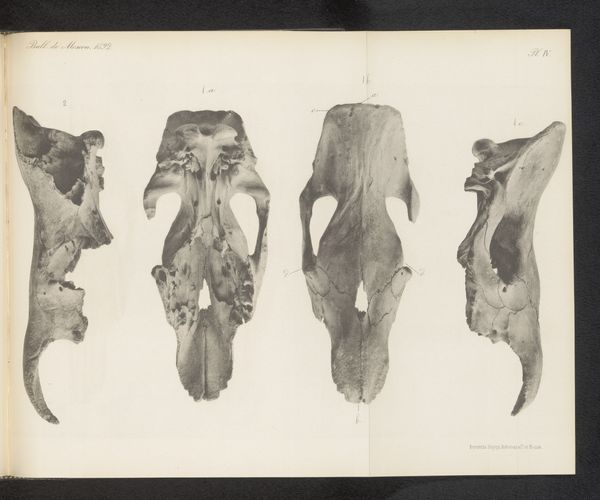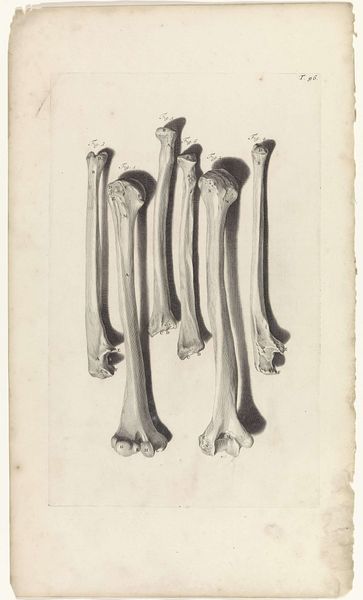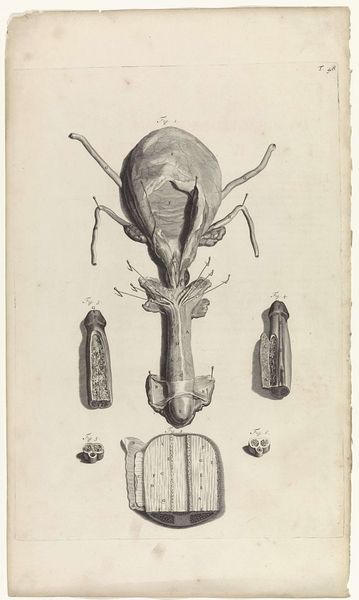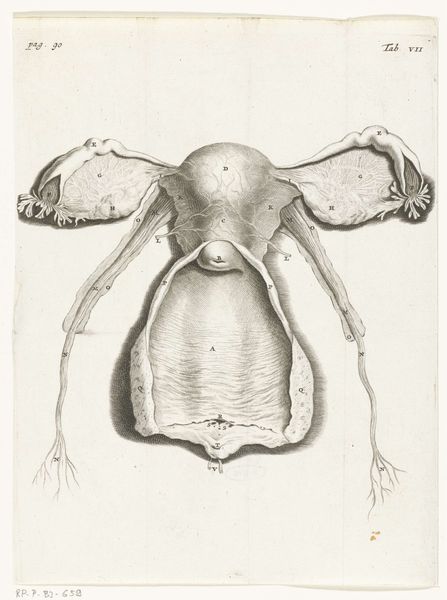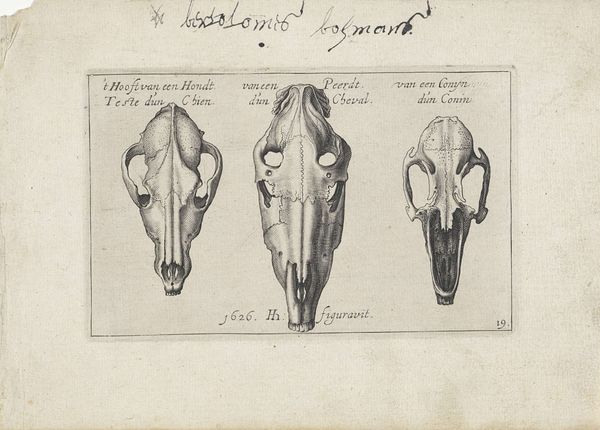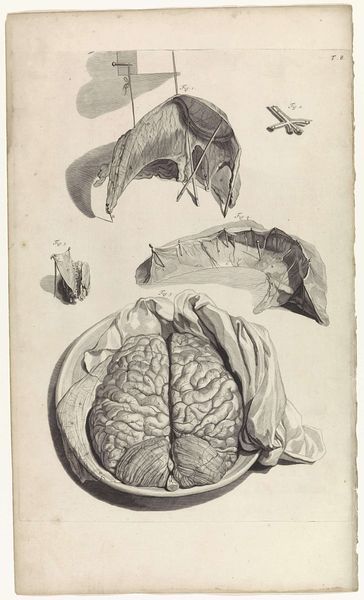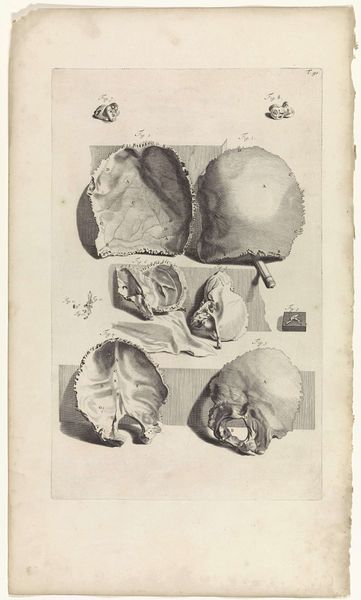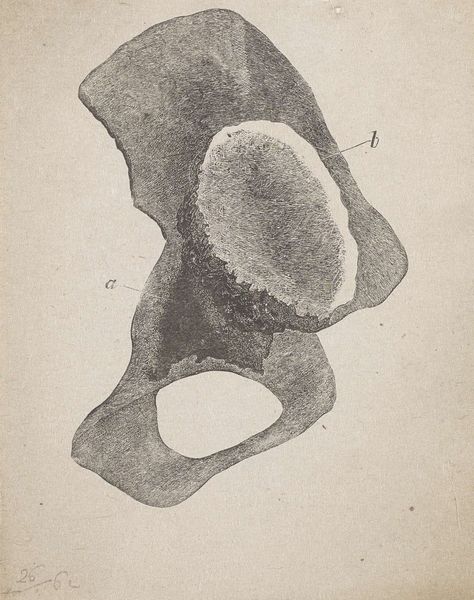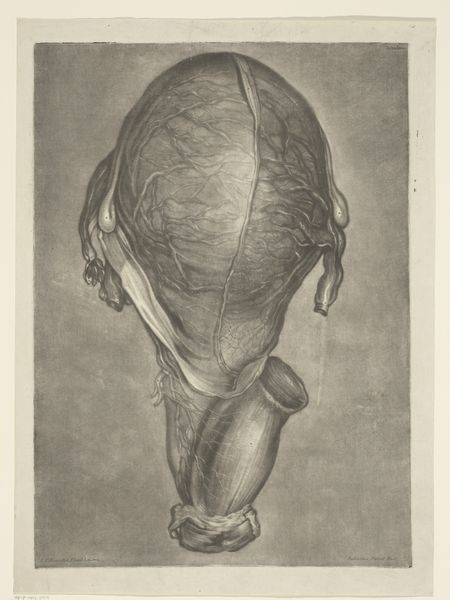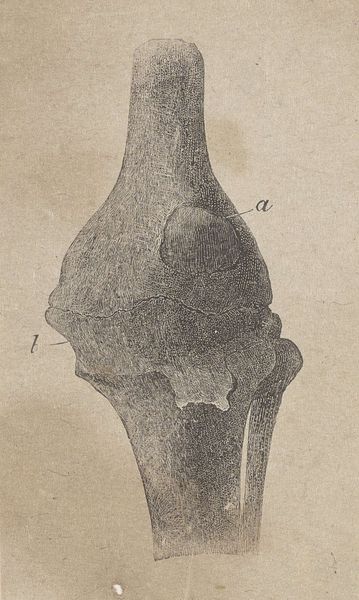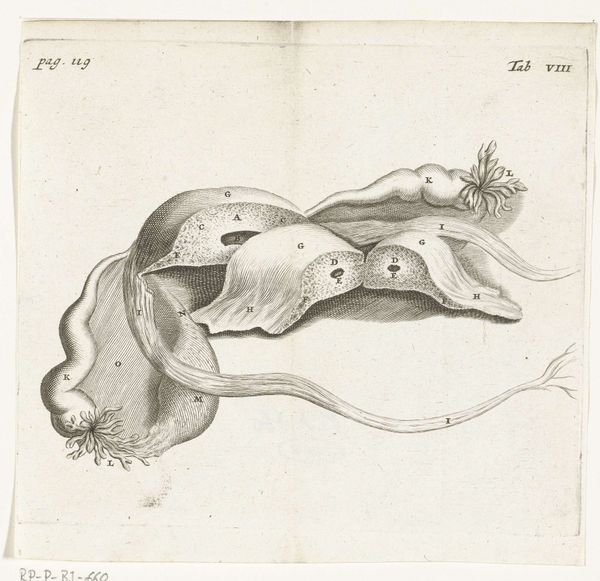
drawing, pencil, graphite
#
drawing
#
baroque
#
pencil sketch
#
pencil
#
graphite
#
history-painting
#
academic-art
#
realism
Dimensions: width 275 mm, height 440 mm
Copyright: Rijks Museum: Open Domain
Curator: Before us is "Anatomische studie van de schouderbladen en het sternum" created around 1685 by Pieter van Gunst, using graphite and pencil. It is currently held at the Rijksmuseum. Editor: My first impression? Stark, yet somehow graceful. The floating bones are arranged with a delicate precision. The shading gives them a solidity that contrasts intriguingly with the blank background. Curator: Indeed, observe how van Gunst renders form through subtle gradations of light and shadow. The starkness you note is not simply absence, but rather a conscious choice to focus the viewer's attention solely on the skeletal structure itself. There's a reduction to pure, essential form, consistent with the academic realism of the era. Editor: Absolutely. The sternum and clavicles – they almost resemble heraldic devices. The shoulder blades could easily become stylized wings or shields in a coat of arms. This hints at a symbolic language related to protection and bearing burdens. It also makes me consider the bones themselves as cultural symbols of strength and vulnerability, even death. Curator: I appreciate your interpretive leap to heraldry; it brings an interesting layer to the drawing. But I'm also drawn to its scientific accuracy. Notice how van Gunst depicts the texture of the bone, the minute ridges and variations. This pursuit of verisimilitude, so common in anatomical studies, also has inherent artistic merit. The precise lines have a certain beauty in their exactness. Editor: Do you think that precision also speaks to a cultural preoccupation with the body during that time? Perhaps an impulse to both understand and contain it through this controlled representation? As Europe recovered from the Plague, medicine took on great urgency, becoming almost religious with dissections. Curator: It certainly connects to a growing interest in the scientific understanding of the human body during the late 17th century, part of a larger shift in worldview during the Baroque period, characterized by heightened drama, tension, and grandeur, even in something so seemingly clinical. Editor: A drama in miniature. Ultimately, though, I see this work as transcending its scientific purpose to become an evocative meditation on form, function, and the enduring symbolic power of the human skeleton. Curator: Agreed. Whether seen through a formal lens or as a carrier of cultural memory, "Anatomische studie van de schouderbladen en het sternum" compels a profound contemplation on structure, beauty, and being.
Comments
No comments
Be the first to comment and join the conversation on the ultimate creative platform.
